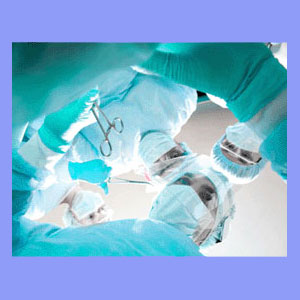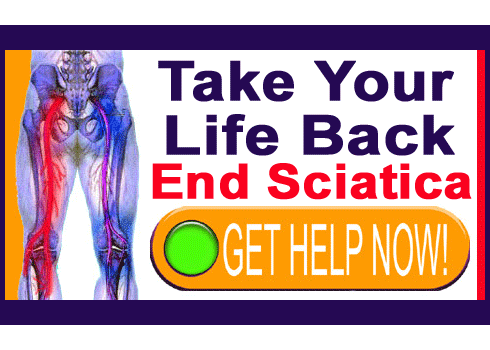
Sciatica treatment accounts for a sizeable portion of back pain care within the medical system today. Sciatica is one of the most widely experienced of all lower back pain syndromes and affects countless lives around the world. Treating sciatica is a multi-billion dollar industry, with doctors, therapists, chiropractors, orthotic makers, physical therapists, surgical device designers and especially pharmaceutical manufacturers, all competing for your hard earned money.
This important resource section provides an overview of various approaches to conservative, moderate and invasive sciatica treatment. Individually focused articles each detail a particular treatment option, so the patient will be able to better select the right choice of therapy to suit their specific needs and expectations.
Conservative Sciatica Treatment
Conservative sciatic nerve pain treatment can be accomplished medically, through complementary modalities or even using home remedies. Learn more about treating sciatica at home. Conservative care is almost always indicated for sciatica and should not progress to include drastic or invasive interventions unless there is simply no other option available. Some of these options for sciatica therapy are far more effective than others, but all are symptomatic treatments, with the exception of chiropractic, which might on rare occasions enact a cure for the pain.
The most common conservative forms of sciatic nerve treatment include:
Ayurvedic cures for sciatica originate from age-old Indian remedies.
Chiropractic for sciatica uses spinal manipulation to provide relief.
Sciatica exercises and sciatica stretches can be self managed or professionally provided therapies. In fact, both of these practices are the main components of physical therapy for sciatica.
Yoga for sciatica is a holistic and constructive practice that benefits mind and body.
Massage for sciatica can be used to soothe pain anywhere in the anatomy.
Sciatica trigger points can be utilized to provide deep relaxation.
Reiki for sciatica is an interesting therapy choice rooted in spiritualism.
Sciatica diets, using various types of sciatica herbs, might help some patients to decrease their suffering.
Sciatica hypnosis may be effectual for minimizing the perception of pain.
Acupuncture for sciatica and acupressure for sciatica can provide non-pharmaceutical pain management for patients.
Alexander technique for sciatica can correct postural deficiencies that might be contributing towards painful symptoms.
TENS for sciatica is a form of simple electrotherapy that can be utilized anywhere. There are other types of electrotherapy for sciatica, but transcutaneous electrical nerve stimulation is the most commonly used variety of therapy.
Bed rest for sciatica is certainly not a good solution for ongoing symptomatic complaints.
Heat or ice for sciatica can both relieve pain and other expressions.
Sciatica drugs are the most popular and frequently used treatment.
Inversion therapy allows patients to provide spinal decompression at home.
Sciatica back braces are usually illogical for the type of symptoms suffered.
Sciatica specialists might be doctors, therapists or chiropractors.
Chinese medicine for sciatica encompasses many healing protocols.
Rolfing for sciatica is a form of bodywork that is very sought after by back and leg pain sufferers.
Reflexology for sciatica uses pressure points on the feet or ears to provide relief.
Traction for sciatica is a traditional treatment that is rarely employed in modern medical communities anymore.
Weight Loss for sciatica allows patients to lighten the stress on sensitive nerves by reducing body mass.
Homeopathy for sciatica is an interesting all-natural approach to care.
Hydrotherapy for sciatica utilizes the healing power of water to act on body and mind, providing pain relief, functional improvement and risk-free treatment for all manner of conditions.
Pain coaching for sciatica provides a complete support base for patients with severe symptoms. Coaching is proven to reduce pain scores and improve overall life quality.
Magnetic therapy is mostly a home-based care routine that might be worth investigating for some advocates of alternative medicine.
Cold and low level laser for sciatica offer the possibility for pain management and have been widely promoted by medical product manufacturers and individual care providers due to their extreme profitability.
Ultrasound for sciatica is a form of pain management using a technology traditionally utilized for diagnostic purposes.
Nerve ablation for sciatica for never provide a cure for the underlying source of pain, but may help to reduce or even eliminate symptoms long-term.
Moderate and Drastic Treatments
Sciatica epidural injections are commonly prescribed for patients who do not respond to more conservative measures. Nerve blocks are borrowed from the general back pain treatment sector and used often in sciatica sufferers.
While epidurals, such as steroid injections, represent an escalation of care, they are typically just a new form of pharmaceutical treatment and are also symptomatic in nature, with the possible exception of prolotherapy and flushing solutions specifically for ruptured disc induced chemical radiculitis.
Other varieties of sciatica injection therapy include lidocaine for sciatica, which is a popular anesthetic injection and patch therapy, and Botox for sciatica, which is a great form of long lasting muscular spasm therapy.
Non-surgical spinal decompression qualifies as a moderate option simply for the considerable cost and time requirement of the treatment. For patients with some verifiable structurally-induced pain conditions which have not resolved through conservative care, spinal decompression is one of the very best treatment options. This is especially true for disc-related sciatica concerns, such as herniations causing pinched nerves or spinal stenosis.
Sciatica surgery is the end of the line when it comes to sciatica therapy options. Surgery should always be a last resort, but is often performed both prematurely and even unnecessarily. Spinal surgeries demonstrate generally poor to horrific curative results and sometimes cause the dreaded occurrence of failed sciatica surgery syndrome.
Alternative Sciatica Treatment
Knowledge therapy is a completely different approach to sciatica care. This treatment uses no physical modalities whatsoever and actually encourages a patient to cease their reliance on all manner of medical and complementary care practices. This makes the treatment perfect from an economical point of view, especially when you consider that the therapy is free.
Knowledge therapy demonstrates excellent curative results for a wide range of mindbody-enacted back and leg pain syndromes and its statistics for permanently resolving chronic pain are well documented in the literary offerings of such noted physicians as Dr. John E. Sarno, Dr. Deepak Chopra and Dr. Andrew Weil.
Knowledge therapy is unique amongst popular back and neck pain therapies, since it has no risks. Patients who try this approach literally have nothing at all to lose, except their pain.
Treating Sciatica Guidance
I can not help but want to share our own proprietary pain relief program, since it is proven to work well for so many people with many different diagnoses. Best of all, it is safe, effective, cost-efficient and self-managed. You can find the program on our product page for immediate help.
The most important part of achieving successful treatment for sciatica is starting with an accurate and correct diagnosis. As I describe throughout the site, misdiagnosis of sciatic symptoms is rampant and is the usual reason for therapy to fail in resolving the painful complaint. This is especially true when the patient has already tried multiple treatment options without success.
Please read any or all of the above article pages for detailed information on any of these treatment options. In fact, I highly recommend learning about all your possible selections before choosing any singular path to treatment.






